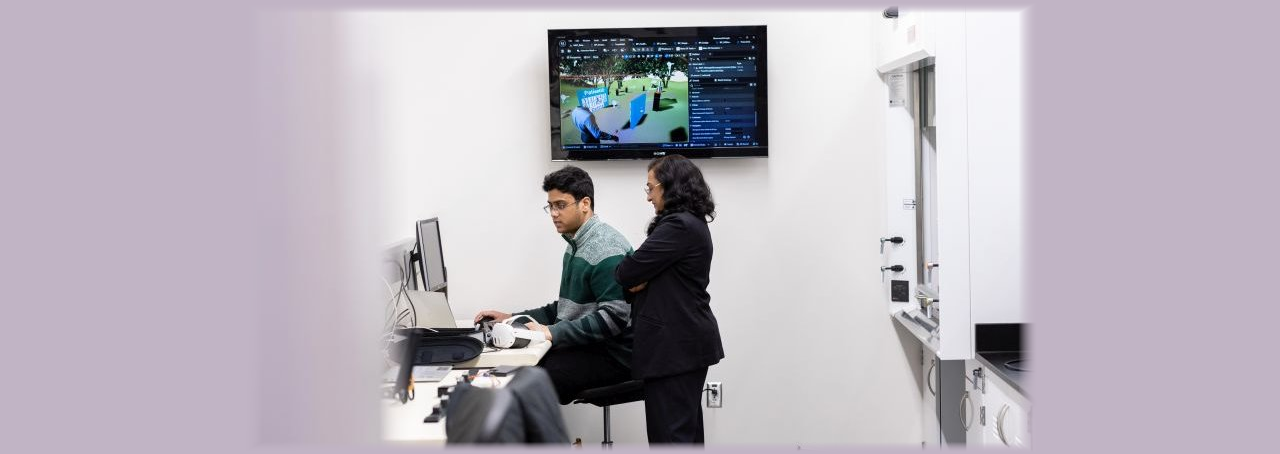UAlbany Inventors Seek Record Number of Patents
Courtesy of the University at Albany
University at Albany researchers and scholars filed nearly four dozen patent applications in the 2024 fiscal year, a record for the campus as its research and entrepreneurial output continue to increase.
Once reviewed by the U.S. Patent Office, the 46 new applications could join the 62 U.S. patents issued since 2010 to UAlbany and its division within the SUNY Research Foundation, which manages and protects faculty inventions and other intellectual property (IP) developed on campus.
“The ingenuity of UAlbany faculty and the discoveries they make cannot help the public if those discoveries never leave our labs and classrooms,” said Thenkurussi (Kesh) Kesavadas, UAlbany’s vice president for research and economic development. “Protecting faculty inventions and facilitating translation from the lab to market to ensure they can improve lives is an essential piece of the public service performed by research universities. Last year’s record number of patent applications shows UAlbany faculty take that obligation seriously and that a culture of innovation is thriving on our campus.”
The new applications were led, in part, by the return of Department of Nanoscale Science & Engineering to the newly expanded College of Nanotechnology, Science, and Engineering (CNSE), including a new invention by Research Scientist and CNSE Affiliated Professor Aishwari Talhan and her team that leverages extended reality to enhance traditional rehabilitation practices in clinical settings for patients recovering from lower limb injuries. The result is more engaging therapy sessions and faster recovery.
Disclosure is Critical
The path toward protecting new IP begins with what’s known as disclosure — the step at which faculty members notify UAlbany’s Office of Technology Transfer in writing that they have developed new intellectual property. It is critical that this step is taken before information about that IP is discussed at a conference or otherwise published, said Peter Gonczlik, UAlbany’s director of technology transfer.
From there, Gonczlik’s office can advise on appropriate next steps, which often involve either seeking a copyright or a provisional patent to temporarily protect the invention while R&D continues.
Gonczlik said it’s a common misconception that only researchers in the hard sciences need to worry about protecting IP. In reality, he said, faculty across the University —including the social sciences and humanities — are likely generating potentially valuable IP every year that goes unprotected.
For example, Associate Professor DeeDee Bennett Gayle, chair of the Department of Emergency Management and Homeland Security, is working with Gonczlik’s office to protect a new virtual reality game she developed to improve disaster preparedness and hazard awareness. She will begin experimenting on the usefulness of the game with older adults .
“We want people to think of IP disclosure as a routine part of their scholarly process, just like publication,” Gonczlik said.
Bringing Resources Back to the Campus
Once faculty inventions are protected, researchers can work with the Office of Economic Development, Entrepreneurship, and Industry Partnerships to launch their own startup company or have the Office of Technology Transfer market their IP for licensing to established companies already working in that sector.
IP developed on campus is owned by UAlbany, which retains 60 percent of the revenue generated by commercializing it to cover the costs of the tech transfer and startup services provided by the University. The other 40 percent goes back to faculty members, many of whom reinvest it in their labs to support continued R&D.
Amid uncertainty surrounding federal research funding, other sources of R&D support become increasingly important, Gonczlik said — including revenue generated from University-owned IP.
“It’s like having nuggets of gold in the ground around us, and we need more people on the crew to help dig it up,” he said. “It opens up a world of opportunities.”
comments powered by Disqus


